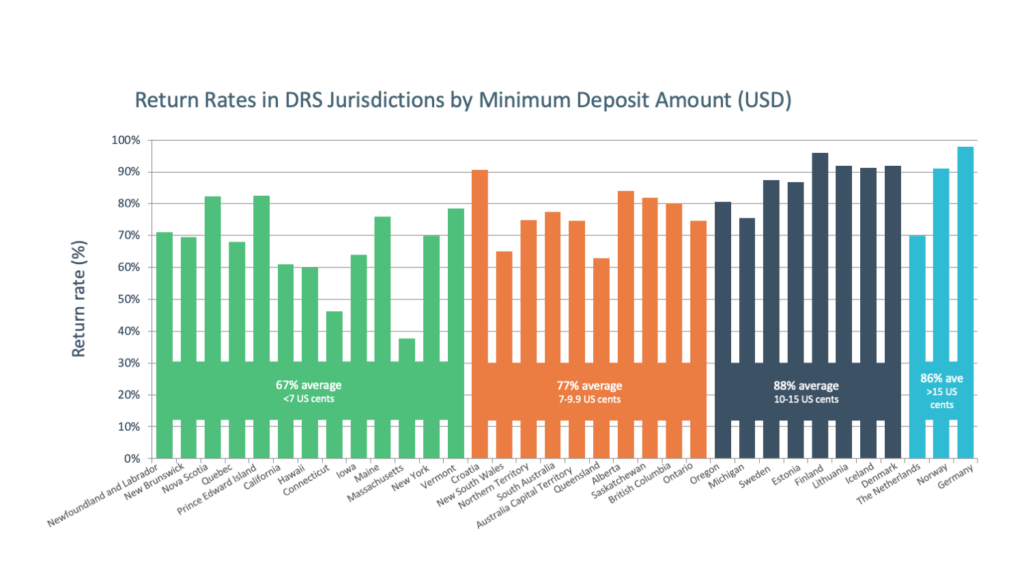Hello again!
Welcome to the third issue of Bottle Bill Common Ground — a limited-series newsletter from Reloop North America highlighting evidence-based guidance for legislators, policy makers, industry, and advocates working on bottle bills. (If you haven’t read the first two issues, you can do so here and here!) This issue focuses on Principle #3 of the 10 high-performance principles for an effective deposit return system (DRS).

The word “deposit” is literally at the heart of any bottle bill — a basic requirement is the collection of a monetary deposit on beverage containers (refillable or non-refillable) at the point of purchase. That deposit is refunded to the consumer when the empty container is returned to a redemption location for reuse and/or recycling. Let’s take a look at why a modernized DRS requires that we meaningfully consider the deposit.
Because the consumer has an economic incentive to recycle, DRSs result in beverage container recycling rates two to three times higher than the rates achieved by states or communities that rely only on curbside recycling programs, particularly if the deposit is set at an effective level.
If the deposit is set too low consumers can feel “return fatigue.” Why spend time and energy returning a container when the financial reward on that effort is so low? In this day and age, a nickel no longer means that much. A dime deposit, however, tells a different story.
All research data on DRS in action shows that beverage container deposits should be set at no lower than $0.10.
- When Oregon increased its deposit on beverage containers from 5 to 10 cents in April 2017, the impact was immediate — only seven months later, by December 2017, the redemption rate jumped from 64% to 82%. In April 2023, Oregon’s rate was at 88.5%, the highest in the US.
- Michigan’s nearly 90% redemption rate (pre-COVID) is linked to its $0.10 deposit.
The chart below shows return rates in DRS jurisdictions by Minimum Deposit Amount (USD). One can see clearly that far lower rates of return in Canada and US states are linked to lower deposit rates. In states (e.g., Oregon and Michigan again) or countries (e.g., Germany and Norway) with deposits at 10-15 US cents, the return rates are consistently above 90%.
Experience in these jurisdictions has also shown that it is critical to build a mechanism within bottle bill legislation to adjust the value of the deposit if redemption rates fall, even when minimum redemption point requirements are met.
Reloop North America’s research on the impacts of DRS modernization modeled a $0.10 minimum deposit collection rate in five Northeast states and found this impact:

Thanks for reading! We encourage you to share this newsletter widely with those who want or need to know about these principles and practices. Working together from a common ground of knowledge, we can move good bottle bills forward. Sign up here to get these blog posts as emails.

